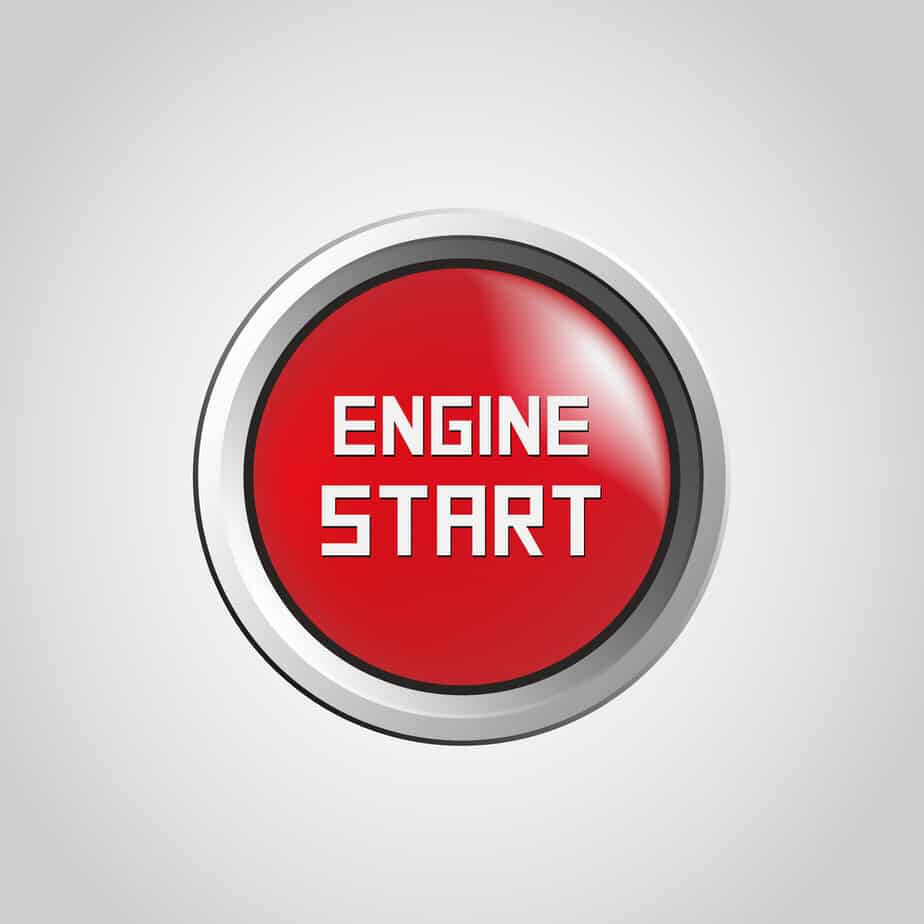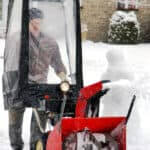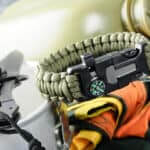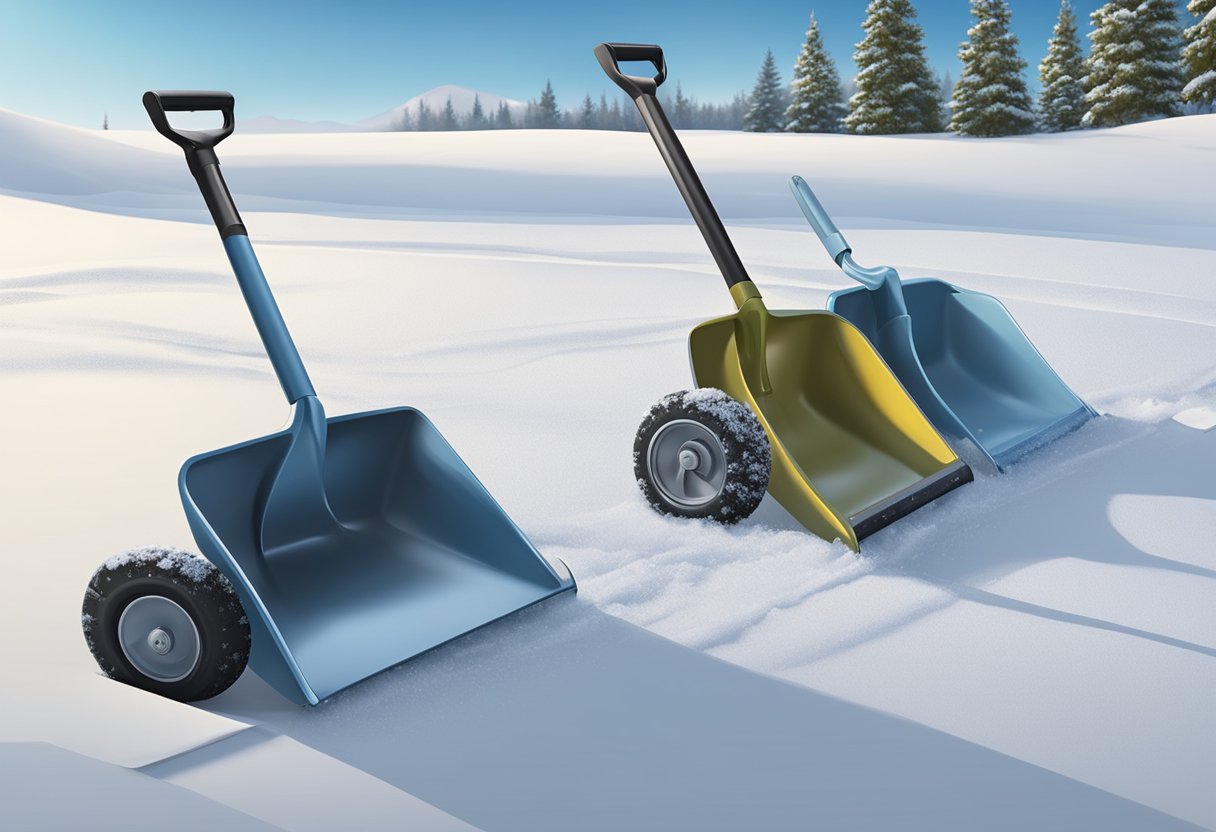If you are new to the world of throwing snow around with super blasts of circulated air, you may be wondering how an electric starter works on a snowblower and maybe, why it may be much more efficient than a pull-start mechanism.
An electric starter takes the place of a pull-start or recoil start with the simple press of a button. Then, either a battery or plugging the snowblower into a 120v outlet provides the juice, and the button starts the ignition process.
The electric starter is much like the key you utilize to start the ignition in your vehicle. The electric start is a motor all its own, and by depressing the button, the engine turns over, and a spark plug ignites the fuel.
You can purchase an electric start mower with a battery; however, almost all electric starters have a built-in option for plugging into AC voltage. Snowblowers are obviously used in cold climates, and often the battery won’t function well to start the snowblower.
Table of Contents
Can You Install An Electric Starter On A Pull-Start Snowblower?
It depends. A few things have to be present on your current snowblower for it to be a feasible proposition to install an electric starter:
- The flywheel has to have teeth
- You need a starter ring on the flywheel
- The engine has to be drilled for mounting
If you realize that this is a professional job, you would be correct. It’s probably not something you could do yourself unless you have the specific expertise. However, if the above three things are present and you have skills for the task, you can certainly install an electric starter.
Whether it would be worth it or not is entirely based on perspective; add on or purchase a new snowblower with an electric starter.
Beware, as purchasing a new snowblower with an electric start is more expensive than a straight pull-start blower.
Without An Electric Start, Can You Start A Snowblower Another Way?
If the pull-start is not playing nicely and you don’t have the juice to crank it up, you can do this with a drill.
This method also requires a few modifications.
If you can access the nut on the snowblowers flywheel, you can start it with a drill.
The nut is usually a square head and will need to be cut on the edges to fit into a socket compatible with your drill.
Afterward, you can access the flywheel nut and run the drill on the forward setting to start p the snowblower.
First, ensure that you have primed the engine and completed all tasks you usually do before reaching for the pull start.
Then attach the drill, and the engine should crank right up.
What Are The Positives Of An Electric Start Snowblower?
An electric starts most positive aspect is that it simplifies things far more than you’d think.
Sometimes, the trusty old pull-start won’t crank the engine on.
Or, it will crank it up, just enough to give you a glimmer of hope, cough a few times, and die again, along with all of your spirit and desire to blow the driveway off.
Unless the electric start motor is defective, it’s almost always a reliable starting mechanism.
Electric start snowblowers with a battery are also highly advantageous, especially if you can store the snowblower in a place where it will stay warm.
If you can’t, it’s worth considering taking the time to bring it inside or provide it with a heat source to get it nice and warm.
Once that battery is warm, it shouldn’t give you much of a problem, aside from a bit of sluggishness if it’s been in storage for several months.
If the battery is drained, at least you have the option of getting it started with an extension cord.
Is An Electric Starter Worth The Expense?
An electric start snowblower will run you about $200+ more than a pull-start snowblower will.
You’re essentially paying for an additional motor, some convenience, and peace of mind.
If you have a bad shoulder, then a pull-start is never going to be right for you unless you’ve learned to do things with your non-dominant hand, and most people can barely comb their hair with their non-dominant hand.
Drawbacks
- Nothing is perfect, and there are a few drawbacks that could potentially ruin your day.
- The troublesome battery in cold weather.
- You have to drag the extension cord out and put it away
- If the starter has trouble, you’ll have to pull-star, if available on your blower, fix it or take it to a mechanic.
- Batteries are notoriously unreliable in frigid weather, and it’s the same in this case. If you don’t have decent environmental conditions when you store the blower and the battery gets too cold, it’s likely to give you problems.
- When it comes to extension cords, well, who wants to drag themselves out to the storage shed, drag it out to the snowblower, plug it into the snowblower, crank it up, and return the extension cord?
Oh, and it’s -15 degrees outside with a wind chill of -18.
The biggest reason you might want to purchase the electric starter version of the snowblower is that the pull-start gives you difficulty.
If that’s the case, you will rely on that electric starter always working.
All Things Considered
An electric start is a vastly simplified way of starting your snowblower.
Since it bypasses a cold engine like it doesn’t even matter, you won’t have to spend countless strokes yanking that pull-cord until your face is purple and you’re in danger of tearing a muscle pulling the start over and over.
Electric starters are pretty reliable, so long as you don’t rely on a cold battery to get you going on those extra chilly mornings.






